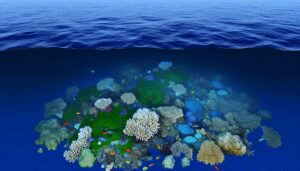Arriving at a commonly accepted definition of ‘sustainable development’ remains a challenge for all the actors in the development process.
‘Making Common Cause’
U.S. Based Development, Environment, Population NGOs
WCED Public Hearing
Ottawa, 26-27 May 1986
A proposed definition of Sustainable Development:
1. Sustainable development is development that meets the needs of the present without compromising the ability of future generations to meet their own needs. It contains within it two key concepts:
- the concept of ‘needs’, in particular the essential needs of the world’s poor, to which overriding priority should be given; and
- the idea of limitations imposed by the state of technology and social organization on the environment’s ability to meet present and future needs.
2. Thus the goals of economic and social development must be defined in terms of sustainability in all countries – developed or developing, market-oriented or centrally planned. Interpretations will vary, but must share certain general features and must flow from a consensus on the basic concept of sustainable development and on a broad strategic framework for achieving it.
3. Development involves a progressive transformation of economy and society. A development path that is sustainable in a physical sense could theoretically be pursued even in a rigid social and political setting. But physical sustainability cannot be secured unless development policies pay attention to such considerations as changes in access to resources and in the distribution of costs and benefits. Even the narrow notion of physical sustainability implies a concern for social equity between generations, a concern that must logically be extended to equity within each generation.
I. The Concept of Sustainable Development
4 The satisfaction of human needs and aspirations in the major objective of development. The essential needs of vast numbers of people in developing countries for food, clothing, shelter, jobs – are not being met, and beyond their basic needs these people have legitimate aspirations for an improved quality of life. A world in which poverty and inequity are endemic will always be prone to ecological and other crises. Sustainable development requires meeting the basic needs of all and extending to all the opportunity to satisfy their aspirations for a better life.
5. Living standards that go beyond the basic minimum are sustainable only if consumption standards everywhere have regard for long-term sustainability. Yet many of us live beyond the world’s ecological means, for instance in our patterns of energy use. Perceived needs are socially and culturally determined, and sustainable development requires the promotion of values that encourage consumption standards that are within the bounds of the ecological possible and to which all can reasonably aspire.
6. Meeting essential needs depends in part on achieving full growth potential, and sustainable development clearly requires economic growth in places where such needs are not being met. Elsewhere, it can be consistent with economic growth, provided the content of growth reflects the broad principles of sustainability and non-exploitation of others. But growth by itself is not enough. High levels of productive activity and widespread poverty can coexist, and can endanger the environment. Hence sustainable development requires that societies meet human needs both by increasing productive potential and by ensuring equitable opportunities for all.
7. An expansion in numbers can increase the pressure on resources and slow the rise in living standards in areas where deprivation is widespread. Though the issue is not merely one of population size but of the distribution of resources, sustainable development can only be pursued if demographic developments are in harmony with the changing productive potential of the ecosystem.
8. A society may in many ways compromise its ability to meet the essential needs of its people in the future – by overexploiting resources, for example. The direction of technological developments may solve some immediate problems but lead to even greater ones. Large sections of the population may be marginalized by ill-considered development.
9. Settled agriculture, the diversion of watercourses, the extraction of minerals, the emission of heat and noxious gases into the atmosphere, commercial forests, and genetic manipulation are all examples or human intervention in natural systems during the course of development. Until recently, such interventions were small in scale and their impact limited. Today’s interventions are more drastic in scale and impact, and more threatening to life-support systems both locally and globally. This need not happen. At a minimum, sustainable development must not endanger the natural systems that support life on Earth: the atmosphere, the waters, the soils, and the living beings.
10. Growth has no set limits in terms of population or resource use beyond which lies ecological disaster. Different limits hold for the use of energy, materials, water, and land. Many of these will manifest themselves in the form of rising costs and diminishing returns, rather than in the form of any sudden loss of a resource base. The accumulation of knowledge and the development of technology can enhance the carrying capacity of the resource base. But ultimate limits there are, and sustainability requires that long before these are reached, the world must ensure equitable access to the constrained resource and reorient technological efforts






